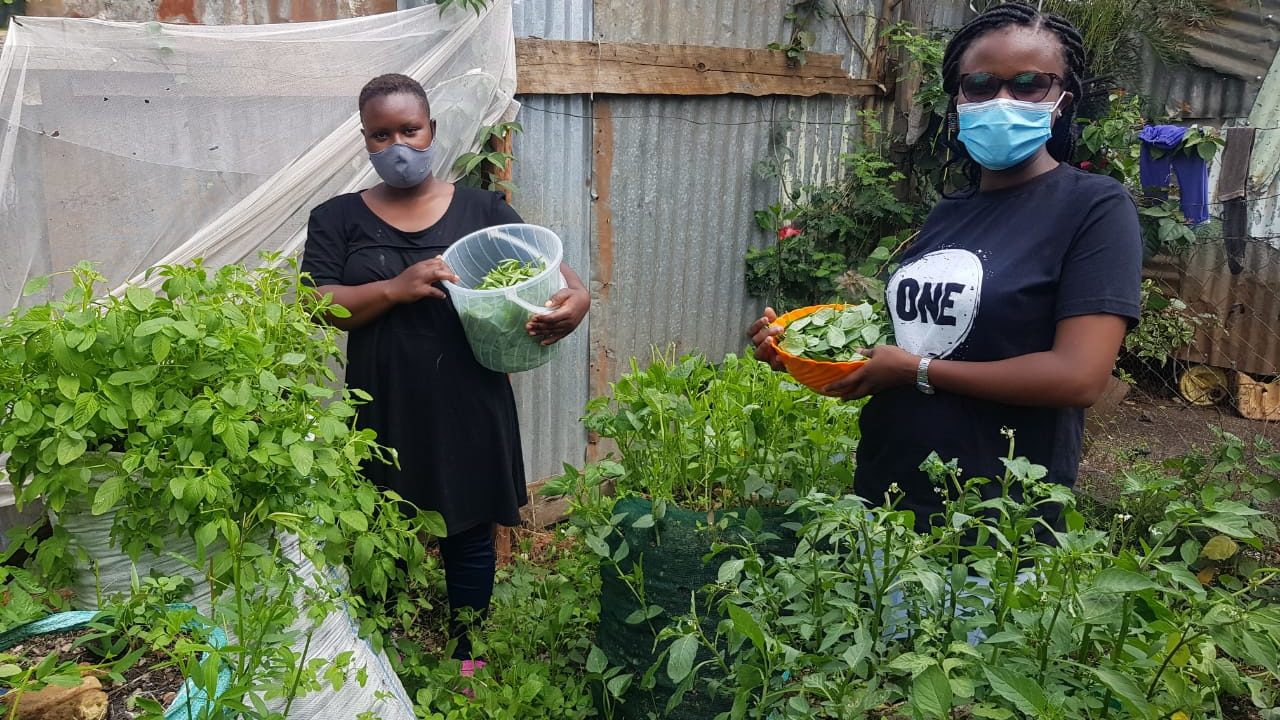Indigenous Vegetables are Key to ‘Eating Right’ in a Changing World
Maureen Muketha
Originally published in Um So Planeta in Portuguese.

Food is everything to me. I have my roots in Tharaka Nithi County, Kenya, where the environment is arid, and high rates of food insecurity and poverty prevail. This is what drove me to study Human Nutrition and Dietetics at the University, to equip myself with the technical knowledge and skills to fight malnutrition. My experiences inspired me to become a vocal food advocate – and to found Tule Vyema, which means “Let’s Eat Right” in Swahili.
From a young age I experienced how women and children were hardest hit by environment change and limited access to food. Very often, members of my own community had insufficient or no food at all – relying on food assistance programs, local NGOs and the church. Without these safety nets – which were not reliable – we lived in fear of ‘routine’ hunger setting in, as well as malnutrition and conflict over food.
I feel that people in my community became too reliant on food relief programs and donors, instead of looking towards local leadership for sustainable farming solutions.
Though agriculture is ‘the engine’ of Kenya’s economy, employing most people, malnutrition and food scarcity are rife. Erratic rainfall, exacerbated by climate change, only worsens this situation – as do market-based challenges of poor input supply, few extension workers and exploitative middle-men.
In Tule Vyema, because the women fully owned and trusted the project right from the beginning, it was never just someone’s idea: it was everyone’s.
Rather than battling the increasingly dry climate by growing thirsty crops like maize, I focused on growing traditional crops – among them indigenous leafy vegetables – which are rich in micronutrients and better adapted to local conditions.
With Tule Vyema, I set my sights on improving food security and tackling malnutrition in my own community, and I brought this knowledge to the game-changing solutions being developed as part of the UN Food Systems Summit, championing cultivation of indigenous vegetables. This type of solution can help not just communities like mine in Kenya, but many across the globe in a similar situation.
Trust is the key ingredient to my community-based work: it is essential for cooperation, collective responsibility, and changing behaviours in a sustainable and reinforcing way. Tule Vyema equips community members mainly with nutrition education through holding frequent health talks in the community. Our main focus is on women, as they are the ones in charge of the kitchen (part of the inherited package of gender roles), but children are also active participants. We also teach women about vertical/ Kitchen gardening as a sustainable, inexpensive and effective way of getting more nutritious food into local diets. Promoting indigenous vegetables in this way is a quadruple win: 1) Money in women’s hands – good for more than food security, this helps to tackle social norms that undervalue women’s contribution to household incomes; 2) Healthy food for families and communities; 3) Preservation of indigenous cuisines and culture; 4) Preservation of the environment through use of sustainable growing practices and cultivation of local crops in harmony with local landscapes.
Accessibility is key. Recognizing that urban populations do not have access to land, “Let’s Eat Right” gets people growing these indigenous crops in sacks in their back yards and selling the surplus to their neighbours.
With preventable diseases including hypertension and type two diabetes linked to poor diet and increasingly common, I would argue they can be curbed with a return to a high-fibre low-fat diet. Eating right allows people to be productive. “Health is wealth,” is one of my mottos.
So far, 200 women have taken up the challenge and now own kitchen gardens but this can be extended to anyone with access to sunshine, some water and a balcony or yard.